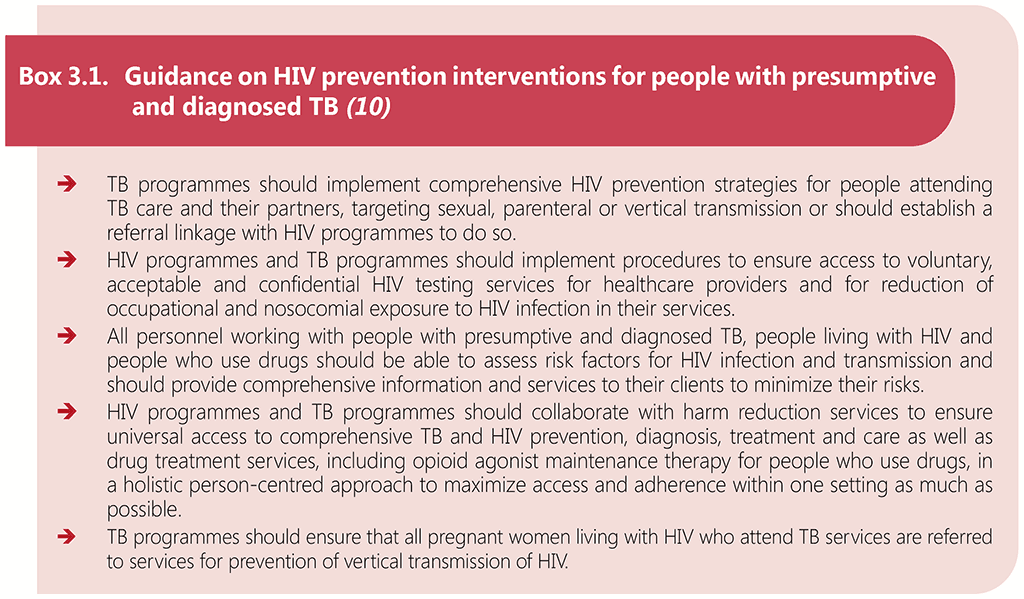Acknowledgements
This section of the WHO operational handbook on tuberculosis. Module 6: tuberculosis and comorbidities was developed by Annabel Baddeley (WHO Global Tuberculosis Programme [GTB]) with support from Bianca Hemmingsen (Department of Noncommunicable Diseases, Rehabilitation and Disability) and Julia Critchley (consultant) with input from Anna Carlqvist, Kerri Viney, Matteo Zignol and Farai Mavhunga, all at the WHO GTB, and Slim Slama (Department of Noncommunicable Diseases, Rehabilitation and Disability), under the overall direction of Tereza Kasaeva, Director, WHO GTB.

 Feedback
Feedback
